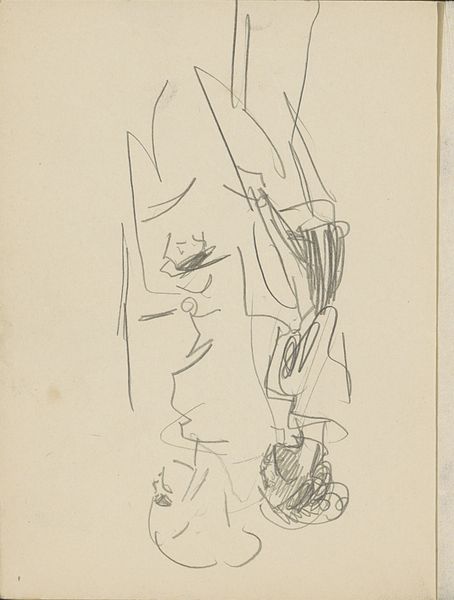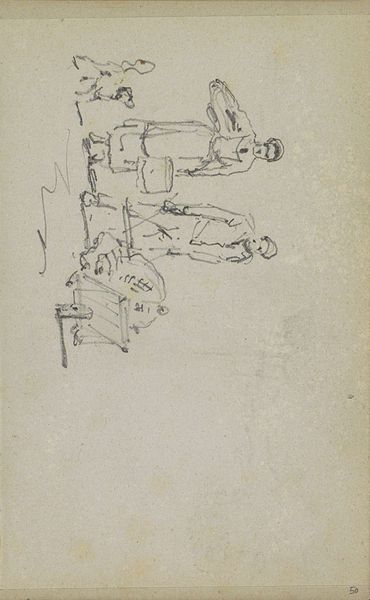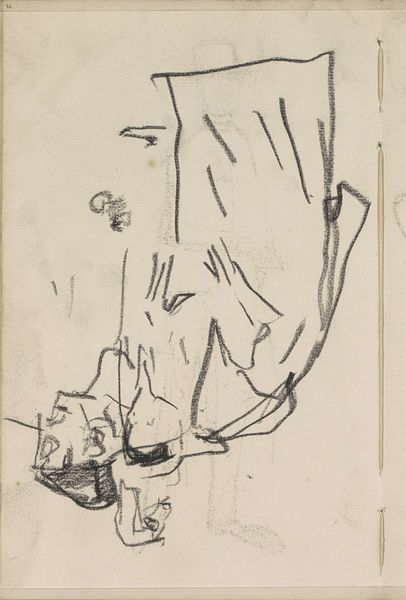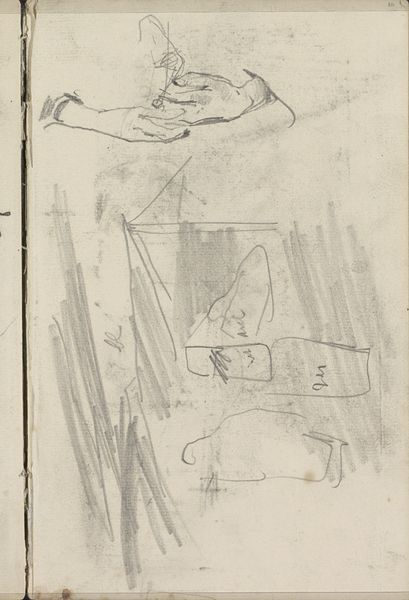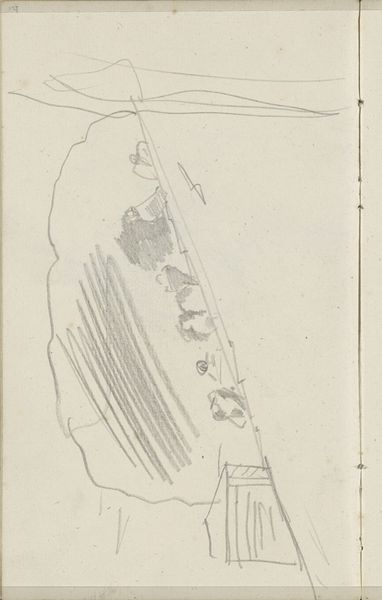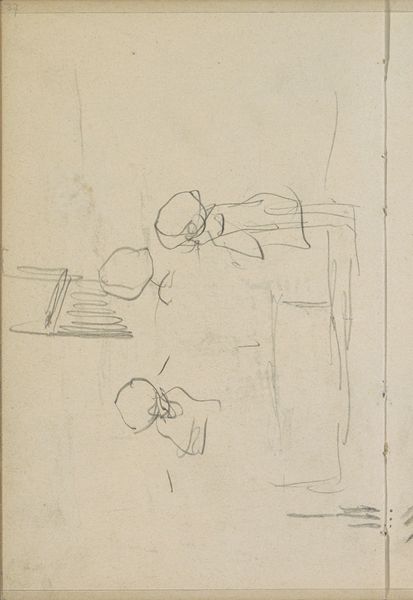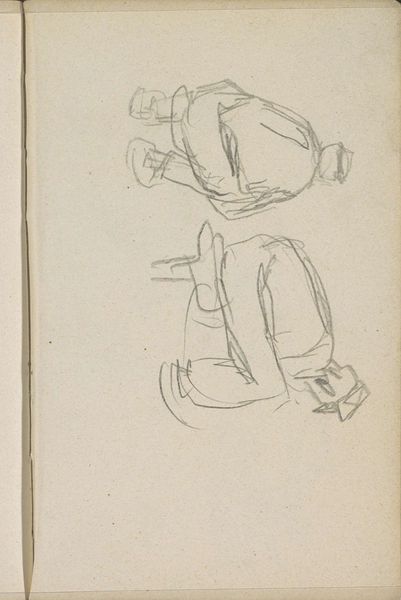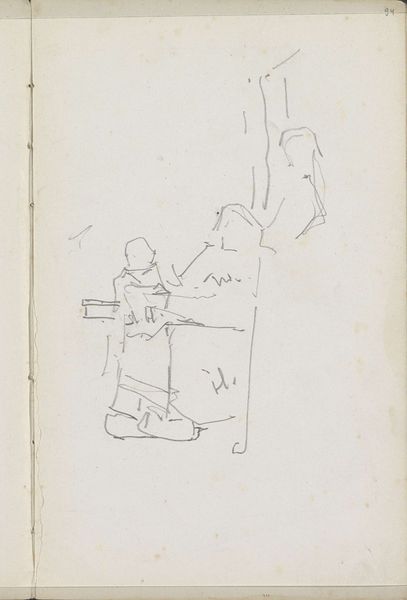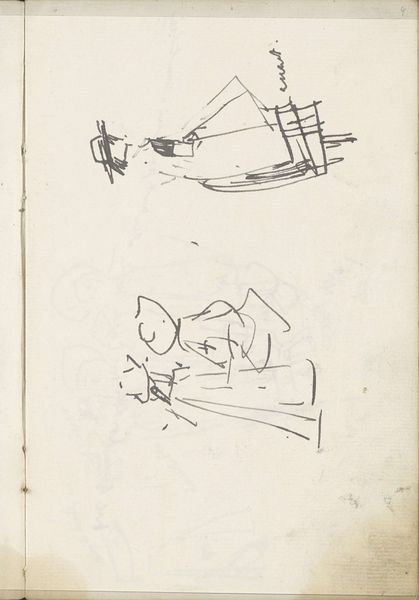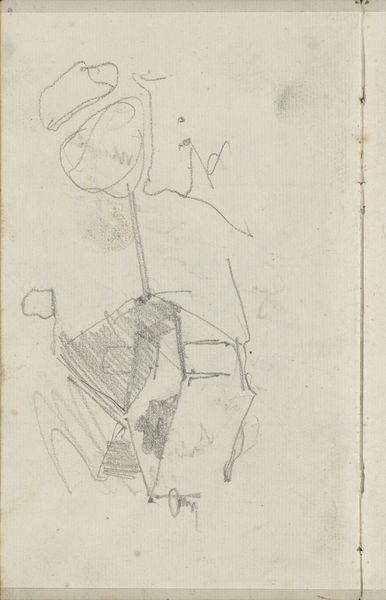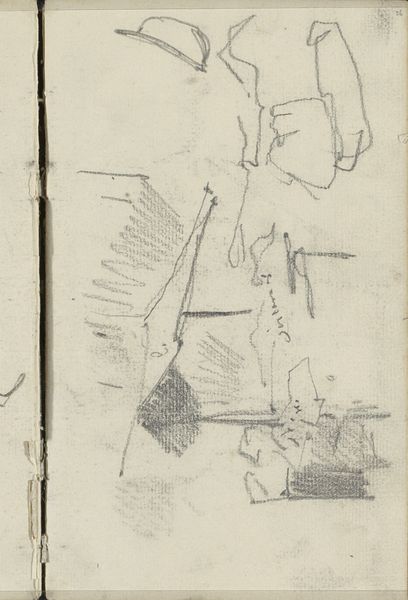
Meisje naast een kind in een kinderstoel Possibly 1881 - 1883
0:00
0:00
drawing, pencil
#
portrait
#
drawing
#
impressionism
#
figuration
#
child
#
pencil
Copyright: Rijks Museum: Open Domain
Curator: Here we have George Hendrik Breitner's pencil drawing, "Girl Next to a Child in a High Chair," likely created between 1881 and 1883. Editor: It's remarkably spare. Raw even. The figures barely emerge from the page; an impression, almost ephemeral, of a domestic scene. Curator: Breitner was very interested in portraying modern life. One might consider what this sketch reveals about his observation of the domestic labor and caretaking often relegated to women and the household structure during this period. He captures a private moment, a vignette of childcare through the filter of class. Editor: The lack of detail lends a certain universality, though. Focusing on form; note the contrast in the handling of line—the child’s head rendered with heavier, almost frantic scribbles versus the tentative, longer strokes suggesting the girl’s form and the high chair. It builds a compositional tension between presence and absence, seen and unseen. Curator: We can connect Breitner's material choices with the realities of artistic production at that time. Pencil drawings like these, perhaps studies for larger works, reveal his access to affordable materials and the role of drawing as a crucial step for academic painting. Consider who could afford models, and for whom. Editor: Absolutely. There’s an incompleteness that speaks volumes. Look at how the girl fades into the background, almost part of the chair itself. It's stark, almost emotionally distancing despite the tenderness implied by the scene. He used the medium and that specific lack of refinement to say something beyond a representational approach. Curator: By considering the labor and material circumstances, it adds dimensions of interpretation beyond mere aesthetics. The means of production themselves reflect something meaningful about the artistic and social context in which he worked. Editor: Ultimately, both process and presence give power to what remains unsaid and unseen, providing entry points into something quite profound, whether we consider the means through which that presence came to be, or simply the structural decisions that shaped it.
Comments
No comments
Be the first to comment and join the conversation on the ultimate creative platform.
